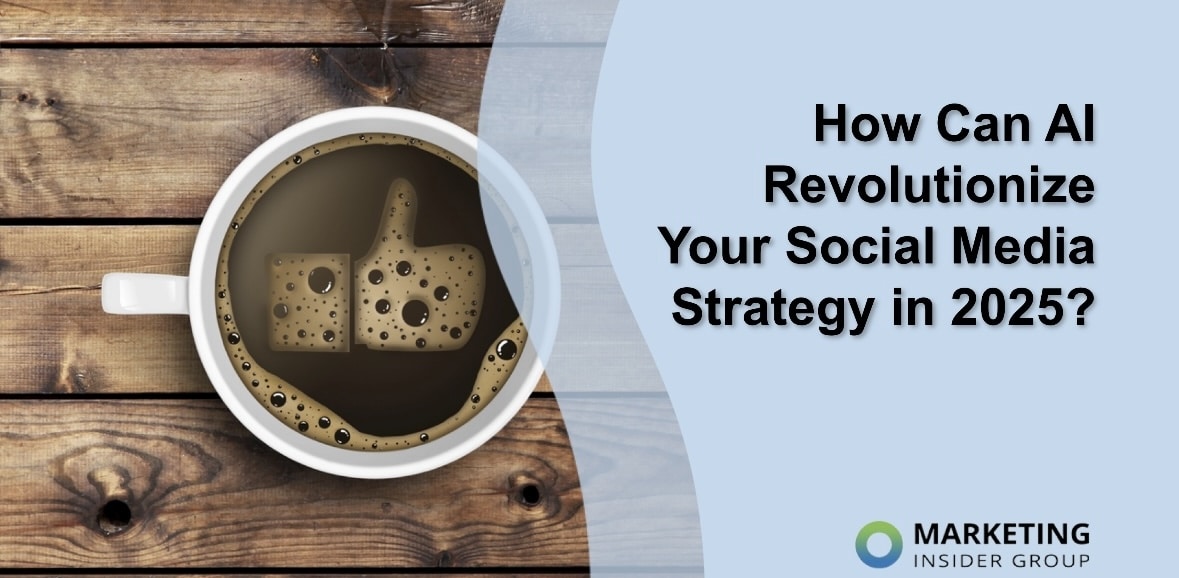
Social media changes fast, and businesses need to adapt if they want to stay visible. New platforms, new features, and new habits make it harder to keep up. Artificial intelligence (AI) is reshaping the way people and brands interact online, and in 2025, its role will only get bigger.
AI tools are not about replacing human creativity but about improving how strategies are built, executed, and measured. From speeding up content production to analyzing performance in real time, AI is transforming the way social media campaigns are planned.
For companies that want to keep growing, learning how to use AI content creation and other AI-driven tools is now essential.
Quick Takeaways
- AI content creation tools can speed up production and free time for strategy.
- Personalization powered by AI improves engagement by making posts more relevant.
- AI can analyze huge amounts of data to guide better decisions about what works.
- Automation tools help maintain consistency across platforms without extra effort.
- Human oversight is still necessary to keep content authentic and aligned with brand values.
The Role of AI in Social Media Today
AI is already part of everyday social media use. Platforms use AI to recommend videos, rank posts, and filter ads. On the business side, AI-driven tools suggest hashtags, predict the best posting times, and even draft captions. In 2025, these tools will advance further, offering even more precision in how social strategies are built.
Instead of guessing what might work, companies can rely on insights generated by AI. For example, tools can show which type of images get the most attention or which tone of voice earns the most clicks. When paired with human oversight, these insights turn into stronger strategies.
AI Content Creation: Producing More, Faster
Creating content takes time. Writing posts, editing images, and creating videos can easily take hours each week. AI content creation tools simplify the process by helping with text, visuals, and even short-form video. These tools can:
- Suggest caption ideas that match current trends.
- Generate image variations based on brand style.
- Provide video templates that can be adapted quickly.
- Optimize posts for different platforms automatically.
In 2025, AI tools will become even better at understanding brand voice and visual style. That means content can be produced faster without starting from scratch every time. This does not remove the need for human input—it reduces the repetitive work so that teams can focus on planning, storytelling, and engaging directly with followers.

Personalization and Relevance
Generic posts rarely stand out. AI makes it possible to personalize at scale, ensuring posts match audience interests and habits. Instead of sending the same content to everyone, AI tools can adjust messaging based on segments.
For example:
- A fashion brand might show one product style to younger audiences and another to older groups.
- A restaurant could highlight different menu items depending on time of day or location.
- A fitness studio might share promotions based on activity level or engagement with past posts.
AI looks at behavior, not just demographics. By analyzing what people like, share, or comment on, it can guide more accurate targeting. In 2025, personalization will become a core part of social strategies, helping posts feel relevant without requiring endless manual adjustments.
Smarter Scheduling and Timing
Posting at the wrong time reduces reach. Instead of relying on general advice, AI-driven tools analyze when each audience is most active. This ensures posts go live at the exact moments people are online and ready to engage.
Scheduling tools are not new, but in 2025, they will become smarter. AI will adapt in real time if patterns change. For instance, if engagement shifts from morning to late evening, tools will adjust schedules automatically. That means businesses don’t just post consistently—they post when it matters most.
Social Listening and Trend Analysis
Understanding what people are talking about is one of the hardest parts of social media. Trends can appear and disappear within hours. AI-powered social listening tools scan platforms continuously, tracking keywords, hashtags, and sentiment.
With this data, businesses can spot opportunities early. Instead of reacting too late, they can join conversations while they are still gaining traction. In 2025, these tools will improve their ability to distinguish between short-term noise and meaningful long-term shifts. That helps businesses focus on what matters most rather than chasing every trend.
Better Analytics and Decision-Making
One of AI’s biggest strengths is its ability to process massive amounts of data. Social media produces endless metrics—likes, shares, comments, impressions, click-through rates, and conversions. Sorting through this manually is nearly impossible.
AI tools bring structure to this chaos. They highlight patterns, such as which content types work best with specific groups or what formats lead to higher conversions. They can even predict future performance based on past data.
In 2025, predictive analytics will become a standard part of social media platforms. That means businesses can plan content calendars not only based on what worked before but also on what is likely to work next.
AI for Customer Support on Social Media
Many people turn to social media for quick answers. AI chatbots integrated with platforms can handle common questions instantly. This speeds up response times while freeing human staff for more complex inquiries.
AI tools can also analyze tone and context. For example, they can tell whether a message is a complaint, a question, or positive feedback. Responses can then be prioritized accordingly.
While chatbots are already common, in 2025 they will become more natural in communication. That creates smoother interactions and better experiences without requiring businesses to be online 24/7.
Visual Recognition and Content Moderation
AI can also support social media strategies by analyzing images and videos. Visual recognition tools can tag content automatically, identify brand logos, and even track how often products appear in user-generated posts.
Content moderation is another area where AI helps. Platforms and businesses need to filter out harmful or irrelevant comments. AI tools can detect inappropriate content faster than manual checks, keeping feeds safe and professional.
As these tools improve, businesses will have stronger control over their social spaces and clearer insights into how audiences use visuals to engage.
Automation Without Losing Authenticity
Automation is one of AI’s biggest benefits, but it comes with a challenge: avoiding a robotic feel. In 2025, businesses will need to balance efficiency with authenticity.
That balance comes from using AI for repetitive tasks—like scheduling, analyzing data, or drafting early versions of posts—while keeping humans in charge of voice, storytelling, and interaction. Followers can tell when a brand feels human, and that connection builds trust.
AI is most effective when it works in the background, supporting strategy rather than replacing creativity.
Challenges of AI in Social Media
AI brings many advantages, but it also raises challenges. In 2025, businesses will need to address these issues directly:
- Over-reliance on automation – Too much automation can make accounts feel generic.
- Privacy concerns – Personalization requires data, and users expect transparency.
- Quality control – AI-generated content must always be reviewed for accuracy.
- Platform rules – As AI grows, social media platforms may introduce stricter guidelines.
Balancing these challenges with the benefits is part of building a sustainable strategy.
What We’ll See in the Rest of 2025
To prepare for AI’s growing role in social media, businesses should start by:
- Testing AI content creation tools to understand their strengths and limits.
- Building workflows that combine automation with human review.
- Training teams on how to analyze AI-driven insights.
- Setting clear rules about data use and transparency.
By 2025, these steps will no longer be optional. They will be necessary for any business that wants to remain competitive in digital spaces.
The Human Role in an AI-Driven Future
Even as AI content creation tools improve, human oversight remains central. Creativity, cultural awareness, and emotional intelligence cannot be automated. AI can suggest and streamline, but people decide what aligns with brand values.
The strongest social media strategies in 2025 will come from teams that understand how to use AI as support rather than a replacement. The mix of data-driven insights and human creativity will drive the best results.
AI as a Core Part of Social Media Strategy
AI is no longer an optional tool—it is becoming a foundation for how social media works. From AI content creation to analytics, personalization, and automation, it changes how businesses approach every part of strategy.
By 2025, social media will be faster, more data-driven, and more competitive. Companies that use AI effectively will save time, improve accuracy, and create content that feels more relevant. Those that ignore these tools may find themselves left behind.
The goal is not to hand control over to machines but to build a smarter process that combines efficiency with authenticity. With the right balance, AI can help businesses scale their efforts while still keeping social media human at its core. If you need help, MIG can help you with our Content Builder Service.



